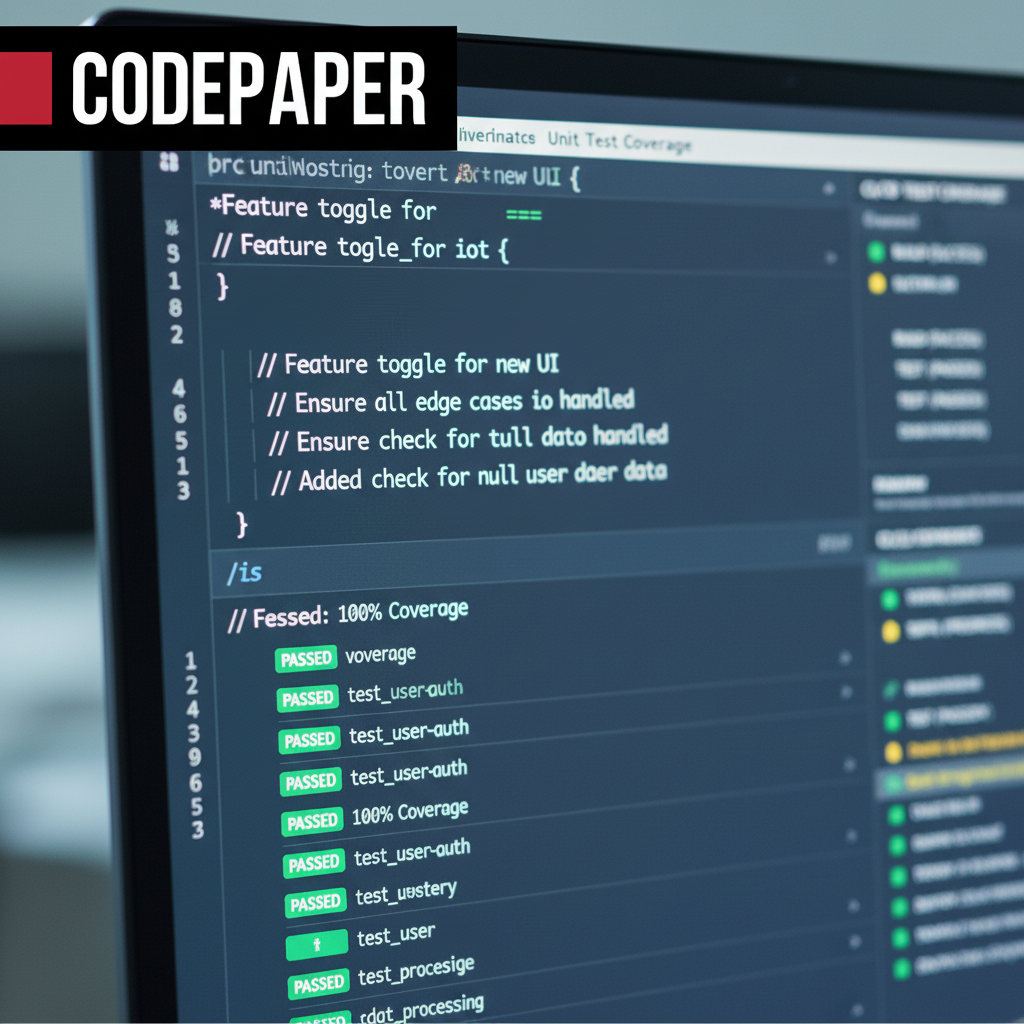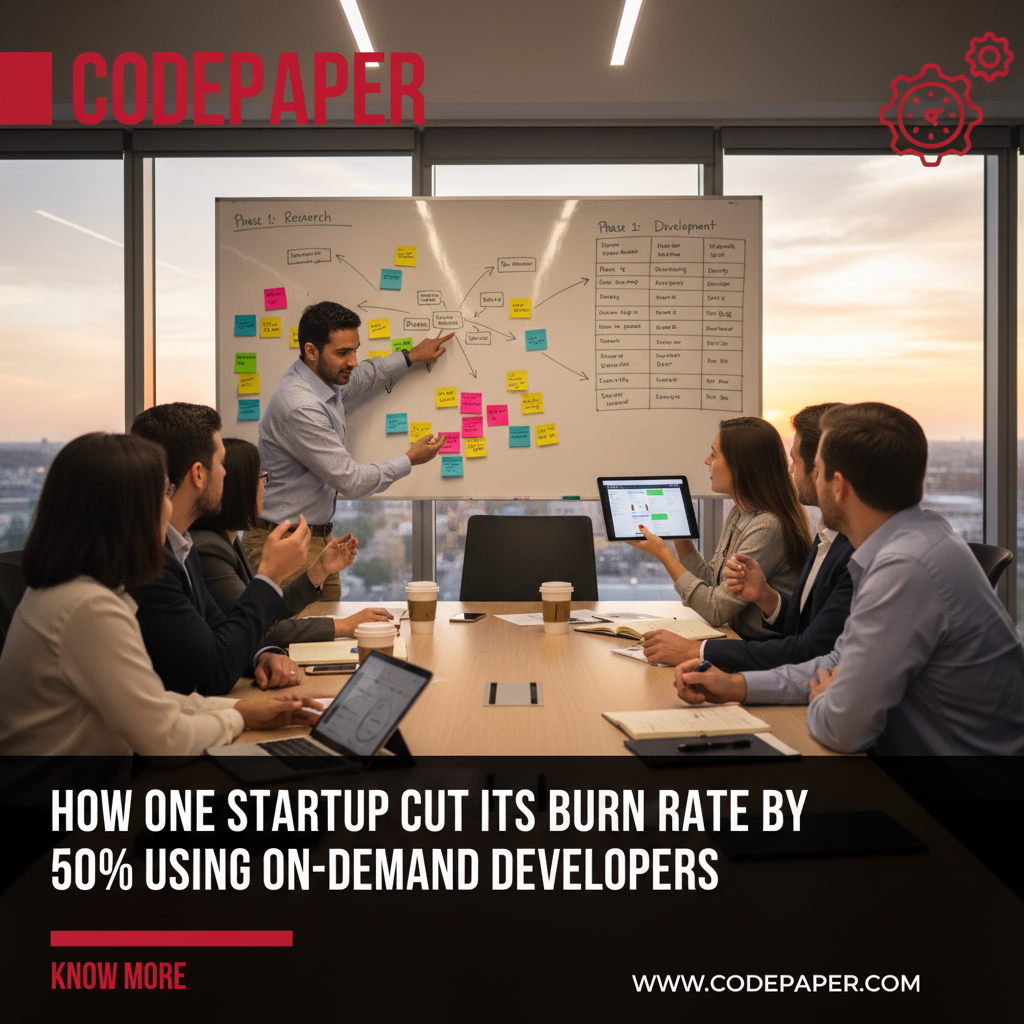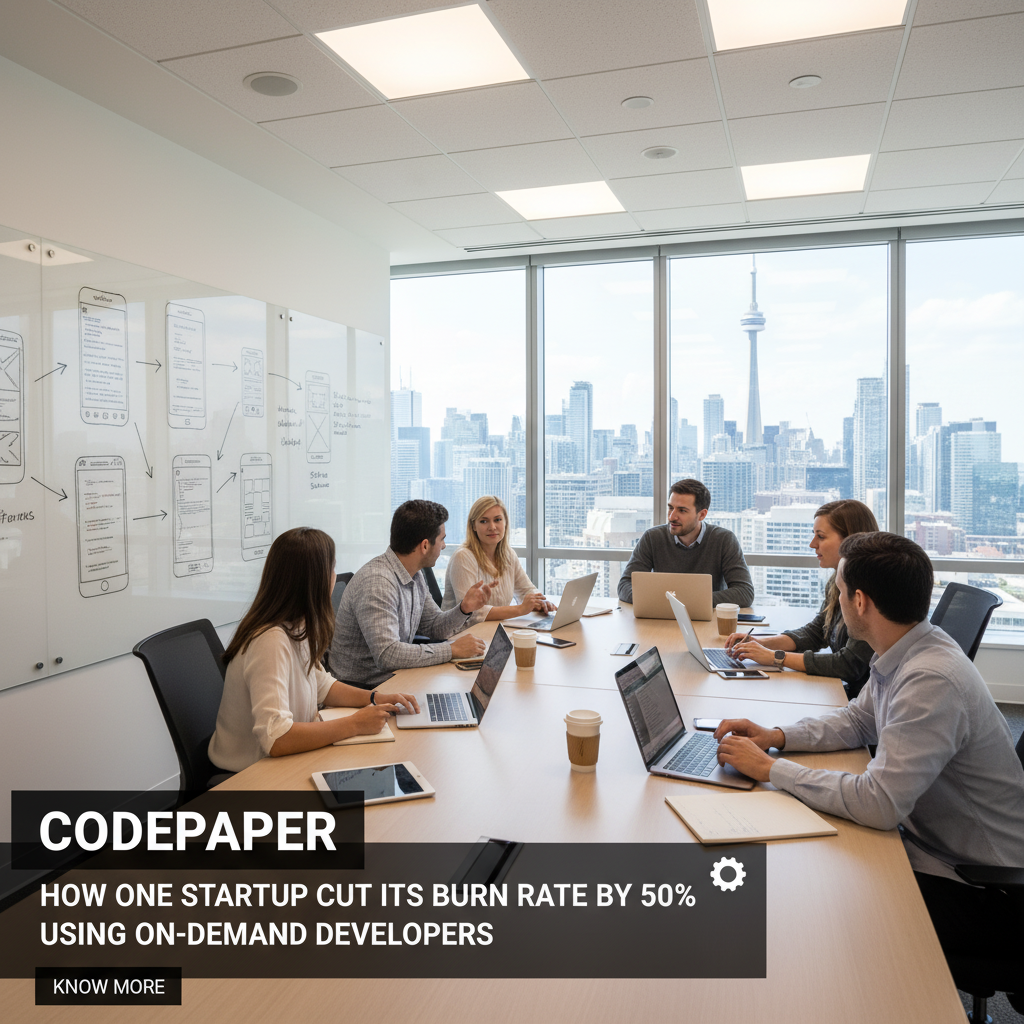Custom Software Development Services: A Toronto-to-Canada Buyer’s Guide
Choosing the right partner for custom software development services can be the difference between a release that ships in weeks and a project that drags on for months. This practical guide breaks down costs, timelines, process, and vendor selection—anchored in the realities of Toronto, Vaughan (Unit 20 – 120 Woodstream Blvd, ON L4L 7Z1), and teams operating across Canada.
TL;DR
If you need custom software development services, start with a 2–3 week discovery, ship an MVP in 8–12 weeks, and scale with CI/CD, DevOps, and QA automation. Favor clear success metrics, a realistic roadmap, and a partner experienced in your industry (e.g., fleet, finance, franchise, manufacturing, solar). Local teams near Vaughan/Toronto can accelerate discovery and on-site workshops.
Quick Answer
Looking for custom software development services? In ON at Unit 20 – 120 Woodstream Blvd, L4L 7Z1, our Toronto–Vaughan team helps you scope, build, and ship faster with discovery, agile sprints, CI/CD, and QA—reducing risk while aligning to business outcomes.
What “Custom Software Development Services” Really Include
At its best, custom software development is a managed product lifecycle—from problem framing through discovery to iterative delivery and long-term support. A modern custom software development company in Canada should offer:
- Discovery workshops, product strategy, and UX research
- Architecture planning (cloud-native, microservices vs. monolith, data model)
- Agile delivery (Scrum or Kanban), story mapping, and backlog management
- CI/CD and DevOps services in Canada (build, test, deploy pipelines; observability)
- Automated QA (unit/UI/API tests) and manual UAT
- Security, compliance, and release management
- Post-launch support, SLAs, and continuous improvement
Codepaper Technologies Inc. provides all of the above as an end-to-end partner. If you prefer to compare partners, see our Toronto service overview to align scope and outcomes like uptime, conversion uplift, or operational cost savings. For broader reach across the country, our custom software partner in Canada page outlines engagement models and sample roadmaps.
When to Choose Custom Over Off‑the‑Shelf
Choose custom software when your workflows, integrations, or security needs are distinct—and when out-of-the-box tools box you in. Typical triggers include:
- Complex integrations (ERP, 3PL, payment gateways, telematics)
- Regulatory constraints (finance and banking, healthcare, energy)
- Operational edge (routing, inventory, pricing, franchise operations)
- High scale or uptime requirements
- Need for proprietary IP or differentiated UX
To pressure-test your decision, compare TCO and lock-in risks. For a neutral perspective on the decision, review this concise build vs. buy comparison from an industry source.

Pricing, Timelines, and How to Avoid Surprises
Transparent planning avoids overruns. While every build is unique, here are typical ranges we see for North American teams. For external context on ranges, explore cost ranges from a well-known industry publication.
| Scope | Typical Timeline | Typical Range (USD) | Notes |
|---|---|---|---|
| Discovery + Architecture | 2–3 weeks | $8,000–$30,000 | Workshops, UX flows, backlog, release plan |
| MVP Web App (Laravel/React) | 8–12 weeks | $60,000–$180,000 | Core features + CI/CD + QA automation |
| Mobile App (iOS/Android) | 10–16 weeks | $80,000–$220,000 | React Native or native; app store readiness |
| Data & Analytics (BI/ETL) | 6–10 weeks | $40,000–$120,000 | Dashboards, pipelines, governance |
| Ongoing DevOps + Support | Monthly | $5,000–$25,000/mo | SLOs, monitoring, autoscaling, security updates |
To keep spend predictable, request fixed-fee discovery, sprint-level budgets, and clear change-control. Build your initial roadmap with “must-have” features only; defer nice-to-haves into a post-MVP release.
Our Delivery Process (From Concept to Launch)
High-performing teams combine speed and quality. Here’s a proven approach we use across sectors like manufacturing inventory, franchise management, finance, solar, and fleet.
| Phase | Key Activities | Outputs |
|---|---|---|
| 1) Discovery | Stakeholder interviews, journey mapping, technical assessment | Vision, release plan, UX flows, prioritized backlog |
| 2) Architecture | Cloud pattern selection, data modeling, security posture | Architecture diagram, API specs, non-functional requirements |
| 3) Build & QA | Agile sprints, code reviews, automated tests, UAT | Working increments, quality metrics, release notes |
| 4) Launch | Cutover plan, observability, performance tuning | Go-live, runbooks, on-call rotation |
| 5) Optimize | A/B tests, backlog grooming, cost optimization | Roadmap updates, KPI improvements, cost savings |
If you’re focused on a web platform, our best web development company in Toronto resource explains how we structure front-end and back-end collaboration so velocity stays high without sacrificing maintainability.
Technologies We Use (and Why)
Tooling should fit the job—not the other way around. For many product teams, we recommend:
- Laravel development services for robust, secure back ends that ship fast
- React/Next.js for modern web front ends; React Native for cross-platform mobile
- PostgreSQL for transactional workloads; Snowflake/BigQuery for analytics
- AWS or Azure for managed services, security baselines, and cost control
- GitHub Actions, Jenkins, or Azure DevOps for CI/CD pipelines
- OWASP guidelines, SAST/DAST, and least-privilege IAM for security
For teams centered in the GTA, our app development company in Toronto page details mobile stack choices, offline-first patterns, and how to pass App Store reviews on the first attempt.
Local Context: Toronto, Vaughan, and Canada-Wide Collaboration
Face-to-face discovery accelerates clarity. We host whiteboard sessions at Unit 20 – 120 Woodstream Blvd, Vaughan, ON L4L 7Z1—just off Highway 7 and close to Highway 27—so stakeholders across finance, manufacturing, franchise, or solar can align quickly. Our team supports on-site and hybrid sprints for Toronto-based leadership and Canada-wide teams.
Local Tips
- Tip 1: For on-site workshops near Woodstream Blvd, plan arrivals around Highway 7 and 27 to avoid peak traffic; visitor parking is available.
- Tip 2: Winter months can impact travel; schedule critical milestones before major holidays and allow buffer around snowstorms.
- Tip 3: Manufacturing and construction clients often prefer early-morning sprint reviews to sync with shift changes in the region.

Industry Scenarios We’ve Solved
Fleet Management and Logistics
We’ve implemented dispatch, routing, and telematics integrations to reduce empty miles and improve on-time performance. Real-time dashboards, mobile apps for drivers, and automated compliance reporting streamline operations.
Restaurant Franchise Operations
From multi-unit menu management to regional promotions and supply chain coordination, our franchise management systems centralize data and enforce brand standards while enabling local agility.
Finance and Banking
We apply security-by-design, role-based access, and audit trails—plus encrypted data flows—to enable compliant onboarding, underwriting, and reporting experiences.
Manufacturing Inventory and eCommerce
For eCommerce development in Toronto and beyond, we connect ERPs, WMS, and payment gateways; then layer forecasting and reorder points. Industrial-grade UX reduces mis-picks and speeds cycle counts.
Solar Energy Platforms
IoT telemetry, asset monitoring, and performance analytics drive efficiency for solar product providers. Our data analytics services in Canada help turn raw telemetry into actionable maintenance workflows.
Build vs. Buy: A Structured Comparison
| Factor | Build (Custom) | Buy (Off-the-Shelf) |
|---|---|---|
| Fit to Process | Exact fit; competitive advantage | Good-enough; adapt your process |
| Time to Value | 8–16 weeks for MVP | Immediate setup |
| Total Cost of Ownership | Higher upfront; lower long-term | Lower upfront; recurring fees |
| Control & IP | Full control and ownership | Vendor lock-in risk |
| Security/Compliance | Tailored to your posture | Shared model, general compliance |
Choosing a Partner for Custom Software Development Services
Evaluate both capability and delivery discipline. Ask potential partners to walk through sample backlogs, release notes, and pipeline dashboards. Look for code review policies, unit test thresholds, incident postmortems, and concrete SLAs.
Vendor Scorecard (Use This Template)
| Criterion | Weight | Vendor A | Vendor B |
|---|---|---|---|
| Domain Experience (your industry) | 20% | __ / 10 | __ / 10 |
| Delivery Discipline (CI/CD, QA) | 20% | __ / 10 | __ / 10 |
| Architecture & Security | 20% | __ / 10 | __ / 10 |
| Team Continuity & Communication | 15% | __ / 10 | __ / 10 |
| References & Case Studies | 15% | __ / 10 | __ / 10 |
| Commercials (value, not just price) | 10% | __ / 10 | __ / 10 |
Looking for a playbook on how this works day-to-day? We break it down in our bespoke software playbook for Toronto teams.
Beyond Coding: AI Automation, DevOps, and QA
Strong teams blend AI automation consultancy with classic engineering. We automate repetitive workflows (data entry, approvals, reconciliations) and integrate LLM-powered assistants where they materially improve accuracy or speed. On the delivery side, our DevOps services in Canada pair CI/CD with observability (tracing, logging, and real-time alerts) so releases are frequent and safe.
QA involves unit tests, API tests, visual regression, and performance testing so you’re never surprised by regressions. Accessibility and usability checks ensure your product is intuitive and inclusive.
Mobile and Web: Getting to Market Faster
For mobile, we help you decide between native and cross-platform (cross-platform app development). For web, we design scalable architectures that fit your growth curve, including caching, queuing, and asynchronous processing.
- Mobile app development in Toronto: pick React Native for speed or native for performance-sensitive features.
- Website design in Toronto: optimize for Core Web Vitals, accessibility, and conversion.
- Laravel development services: accelerate API development, authentication, and background jobs with confidence.
Considering a partner? Explore our GTA presence and recognition among the most reviewed software developers in Toronto.
Security and Compliance (Non-Negotiables)
Security is a process. We follow OWASP best practices, encrypt data at rest and in transit, enforce least-privilege access, rotate keys, and keep dependencies patched. For finance and banking workflows, we align with audit trails, PII handling, and segregation of duties. We also provide periodic assessments and incident response plans.
Maintaining Momentum After Launch
Software is never “done.” After launch, we propose a 90-day optimization window focused on adoption metrics and operational KPIs. This includes A/B experiments, performance tuning, and cost optimization—plus backlog grooming to plan the next two quarters.
Free 30‑Minute Roadmap Review
Get a quick assessment of your goals and constraints, and leave with a practical 8–12 week MVP plan. Toronto–Vaughan on-site or virtual.
See how we approach scoping and delivery as a custom software development partner in Toronto.
Checklist: How to Start in 10 Days
- Clarify outcomes (e.g., reduce churn by 10%, cut manual work by 30%).
- List must-have features only; defer nice-to-haves.
- Gather systems/integration details and key constraints.
- Schedule a discovery workshop (2–3 sessions).
- Approve a release plan and sprint cadence.
- Stand up CI/CD and QA automation early.
- Track metrics weekly; publish release notes.
- Line up UAT users and acceptance criteria.
- Prepare support SLAs and on-call coverage.
- Book your 90‑day optimization window.
Key Takeaways
- Custom software development services pay off when your process or compliance needs are unique.
- Timebox discovery, plan an 8–12 week MVP, and automate QA to reduce risk.
- Pick a partner with strong DevOps, security, and industry experience.
- Local workshops near Vaughan/Toronto speed up alignment and delivery.
FAQ: Buying Custom Software Development Services
How do I budget for an MVP without overcommitting?
Lock scope during discovery and target an 8–12 week MVP. Fund must-have flows only (authentication, core CRUD, key integrations). Defer advanced analytics and complex automations to post-MVP. Use sprint-level budgets, change control, and weekly demos so you can course-correct without derailing timelines.
Is custom better than off-the-shelf for my use case?
If your workflows are specialized or compliance-heavy, custom yields a better fit and ownership of IP. If your needs are common and you can adapt processes, off-the-shelf is faster initially. Model total cost over 3–5 years and consider lock-in risk before deciding.
Which tech stack ships fastest for web apps?
For many teams, Laravel + React/Next.js balances speed and maintainability. Laravel offers batteries-included security and API scaffolding; React/Next.js supports fast, SEO-friendly interfaces. Pair with CI/CD, automated tests, and feature flags for safe, frequent releases.
How do you ensure quality as the team scales?
We enforce code reviews, linters, and unit testing thresholds. CI runs static analysis and automated test suites, while staging mirrors production. We publish release notes, track DORA metrics, and run postmortems for continuous learning.
Can you work with our internal team?
Yes. We offer hybrid models, from fully managed delivery to staff augmentation. We co-own roadmaps, share ceremonies, and integrate with your repos and tooling. This keeps institutional knowledge in-house while accelerating throughput.
